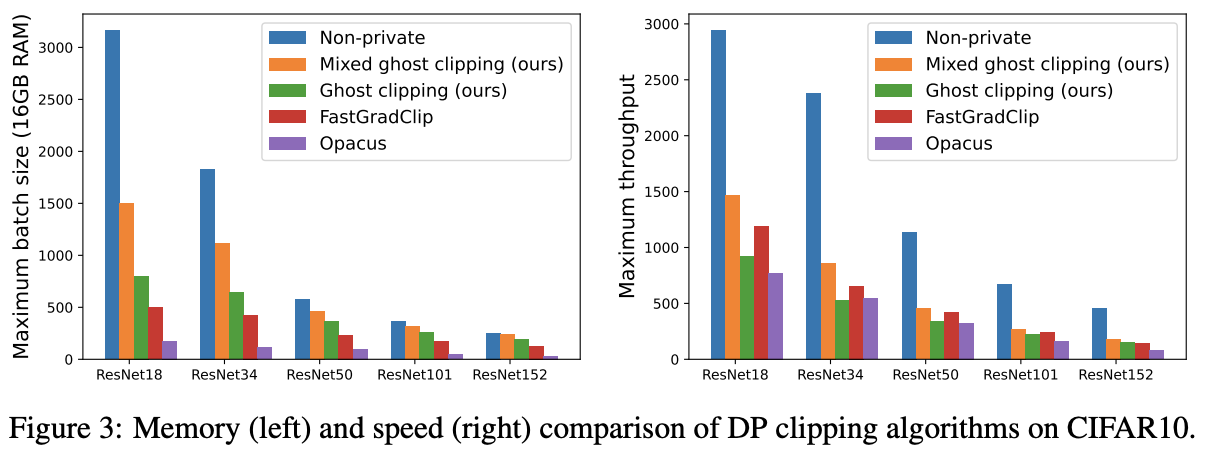Code for NCKH 2023
Based on the paper Pseudo Label-Guided Model Inversion Attack via Conditional Generative Adversarial Network (AAAI 2023).
Install the environment as follows:
# create conda environment
conda create -n NCKH_2023 python=3.9
conda activate NCKH_2023
# install pytorch
conda install pytorch==1.12.1 torchvision==0.13.1 cudatoolkit=11.3 -c pytorch -c conda-forge
# install other dependencies
pip install -r requirements.txtAll the experiments was implemented on local feature : NVDIA RTX 1650 TI 4GB and Google Colaboratory with Tesla V4 15GB
This code contains 2 scenarios :
- Training model with Diffirential Privacy
- Attack model by Model Inversion with cGAN method
-
CelebA , FFHQ and FaceScrub are used for expriments (we use this script to download FaceScrub and some links are unavailable.)
-
We follow the KED-MI to divide the CelebA into the private data and the public data. The private data of CelebA can be found at: https://drive.google.com/drive/folders/1uxSsbNwCKZcy3MQ4mA9rpwiJRhtpTas6?usp=sharing
-
You should put them as follows:
datasets ├── celeba | └── img_align_celeba | ├── ffhq │ └── thumbnails128x128 └── celeba_private_domain
-
You can train target models following KED-MI or contact to duyfaker01@gmail.com for more details
-
To calculate the KNN_dist, we get the features of private data on the evaluation model in advance. You can download at: https://drive.google.com/drive/folders/1Aj9glrxLoVlfrehCX2L9weFBx5PK6z-x?usp=sharing and put them in folder
./celeba_private_feats.
To get the pseudo-labeled public data using top-n selection strategy, pealse run the top_n_selection.py as follows:
python top_n_selection.py --model=VGG16 --data_name=ffhq --top_n=30 --save_root=reclassified_public_dataTo train the conditional GAN in stage-1, please run the train_cgan.py as follows:
python train_cgan.py \
--data_name=ffhq \
--target_model=VGG16 \
--calc_FID \
--inv_loss_type=margin \
--max_iteration=30000 \
--alpha=0.2 \
--private_data_root=./datasets/celeba_private_domain \
--data_root=./reclassified_public_data/ffhq/VGG16_top30 \
--results_root=PLG_MI_ResultsTo reconstruct the private images of specified class using the trained generator, pealse run the reconstruct.py as
follows:
python reconstruct.py \
--model=VGG16 \
--inv_loss_type=margin \
--lr=0.1 \
--iter_times=600 \
--path_G=./PLG_MI_Results/ffhq/VGG16/gen_latest.pth.tar \
--save_dir=PLG_MI_InversionThis Pytorch codebase implements efficient training of differentially private (DP) vision neural networks (CNN, including convolutional Vision Transformers), using [mixed ghost per-sample gradient clipping].
There are a few DP libraries that change the regular non-private training of neural networks to a privacy-preserving one. Examples include Opacus, FastGradClip, private-transformers, and tensorflow-privacy.
However, they are not suitable for DP training of large CNNs, because they are either not generalizable or computationally inefficient. E.g. causing >20 times memory burden or >5 times slowdown than the regular training. And of course , the performance is shown below :
This codebase implements a new technique --the mixed ghost clipping-- for the convolutional layers, that substantially reduces the space and time complexity of DP deep learning.
- We implement a mixed ghost clipping technique for the Conv1d/Conv2d/Conv3d layers, that trains DP CNNs almost as light as (with 0.1%-10% memory overhead) the regular training. This allows us to train 18 times larger batch size on VGG19 and CIFAR10 than Opacus, as well as to train efficiently on ImageNet (224X224) or larger images, which easily cause out of memory error with private-transformers.
- Larger batch size can improve the throughput of mixed ghost clipping to be 3 times faster than existing DP training methods. On all models we tested, the slowdown is at most 2 times to the regular training.
- We support general optimizers and clipping functions. Loading vision models from codebases such as timm and torchvision, our method can privately train VGG, ResNet, Wide ResNet, ResNeXt, etc. with a few additional lines of code.
- We demonstrate DP training of convolutional Vision Transformers (up to 100 million parameters, again 10% memory overhead and less than 200% slowdonw than non-private training).**.
To DP training models on CIFAR10 and CIFAR100, one can run
python -m cifar_DP --lr 0.001 --epochs 3 --model beit_large_patch16_224Arguments:
--lr: learning rate, default is 0.001--epochs: number of epochs, default is 1--model: name of models in timm, default isresnet18; see supported models below--cifar_data: dataset to train,CIFAR10(default) orCIFAR100--eps: privacy budget, default is 2--grad_norm: per-sample gradient clipping norm, default is 0.1--mode: which DP clipping algorithm to use, one ofghost_mixed(default; the mixed ghost clipping),ghost(the ghost clipping),non-ghost(the Opacus approach),non-private(standard non-DP training)--bs: logical batch size that determines the convergence and accuracy, but not the memory nor speed; default is 1000--mini_bs: virtual or physical batch size for the gradient accumulation, which determines the memory and speed of training; default is 50--pretrained: whether to use pretrained model fromtimm, default is True
As a consequence, we can privately train most of the models from timm (this list is non-exclusive):
beit_base_patch16_224, beit_large_patch16_224, cait_s24_224, cait_xxs24_224, convit_base, convit_small, convit_tiny, convnext_base, convnext_large, crossvit_9_240, crossvit_15_240, crossvit_18_240, crossvit_base_240, crossvit_small_240, crossvit_tiny_240, deit3_base_patch16_224, deit_small_patch16_224, deit_tiny_patch16_224,
dla34, dla102, dla169, ecaresnet50d, ecaresnet269d, gluon_resnet18_v1b, gluon_resnet50_v1b, gluon_resnet152_v1b, gluon_resnet152_v1d, gluon_resnet152_v1s, hrnet_w18, hrnet_w48, ig_resnext101_32x8d, inception_v3, jx_nest_base, legacy_senet154, legacy_seresnet18, legacy_seresnet152, mixer_b16_224, mixer_l16_224, pit_b_224, pvt_v2_b1,
resnet18, resnet34, resnet50, resnet101, resnet152, resnext50_32x4d, res2net50_14w_8s, res2next50, resnest50d, seresnet50, seresnext50_32x4d, ssl_resnet50, ssl_resnext50_32x4d, swsl_resnet50, swsl_resnext50_32x4d, tv_resnet152, tv_resnext50_32x4d, twins_pcpvt_base, twins_pcpvt_large, twins_svt_base, twins_svt_large
vgg11, vgg11_bn, vgg13, vgg16, vgg19, visformer_small, vit_base_patch16_224, vit_base_patch32_224, vit_large_patch16_224, vit_small_patch16_224, vit_tiny_patch16_224, volo_d1_224, wide_resnet50_2, wide_resnet101_2, xception, xcit_large_24_p16_224, xcit_medium_24_p16_224, xcit_small_24_p16_224, xcit_tiny_24_p16_224We also support models in torchvision and other vision libraries, e.g. densenet121, densnet161, densenet201.
Or you can build your own Deep Learning model with torch nn module .
- Batch normalization does not satisfy DP. This is because the mean and variance of batch normalization is computed from data without privatization. To train DP networks, replace batch normalization with group/instance/layer normalization. Opacus (>v1.0) provides an easy fixer for this replacement via
opacus.validators.ModuleValidator.fix, but you can also change the normalization layer manually. - Extra care needed for sampling. Taking virtual step with fixed virtual batch size is not compatible with Poisson sampling. [Opacus] provides
BatchMemoryManagerto feature this sampling issue and our mixed ghost clipping can be merged
This code is largely based on https://github.com/lxuechen/private-transformers (v0.1.0) and https://github.com/pytorch/opacus (v1.3) .




